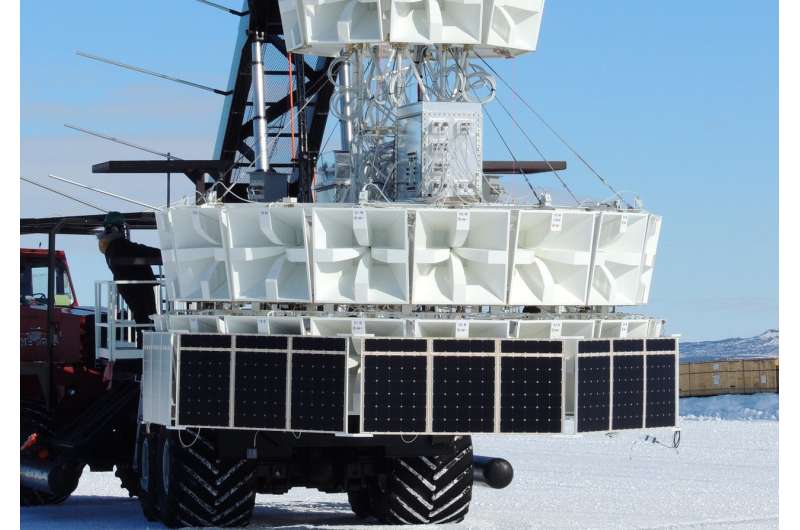October 1, 2018 report
New evidence suggests particles detected in Antarctica don't fit Standard Model

A team of researchers at Penn State University has found new evidence that suggests some particles detected in Antarctica do not fit the Standard Model. They have written a paper outlining their arguments and have posted it on the arXiv preprint server.
Prior research has shown that when low energy cosmic particles encounter the Earth, they are likely to pass right on through—high energy particles, on the other hand, are almost certain to run into something else, preventing them from passing through in one piece. Instead, they cause an avalanche of collisions, creating a shower of particles that eventually emerge on the other side of the planet. But what if a high-energy particle were to make it all the way through without creating a particle shower? That would mean there likely exists a particle that is not described by the Standard Model—and that is exactly what researchers studying particles detected over Antarctica are reporting.
To date, two odd particle events have been detected by a sensor attached to a high-altitude balloon hovering over Antarctica as part of a project called the Antarctic Impulsive Transient Antenna (ANITA)—the first detection was back in 2006, the second in 2014. Both indicated that a high-energy particle had somehow made its way through the planet without encountering anything. The first detection was attributed to equipment problems or some other unknown factor. The second caused more concern—but not enough for anyone to seriously consider challenging the Standard Model. In this new effort, the researchers report that they have found other evidence of the same type of particle, suggesting the two anomalies might truly represent unknown particles.
The new evidence came in the form of sensor data from the IceCube experiment in which sensors buried in the Antarctic ice continually detect particle events. Data from the sensors showed that three events with unexplained properties had occurred. The researchers suggest the two unconnected sources of data indicate that it is time to start asking whether the anomalies hint at the possibility of particles beyond the Standard Model.
More information: The ANITA Anomalous Events as Signatures of a Beyond Standard Model Particle, and Supporting Observations from IceCube, arXiv:1809.09615 [astro-ph.HE] arxiv.org/abs/1809.09615
Journal information: arXiv
© 2018 Phys.org




















